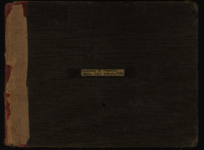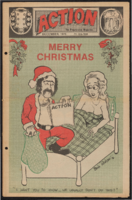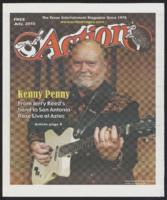Search Results
Displaying results 1 - 5 of 5
Action Magazine, December 1976
Description
Cover story on Kindrick cartoon by Bob Rohan.
Additional machine-extracted names mentioned in this issue: Mark Abernathy, Ronnie Allen, Marcia Ball, Ronnie Branham, Cooter Brown, Jackson Browne, Johnny Bush, Vikki Carr, Jimmy Casas, Patsy Coleman, Alvin Crow, Kent Finlay, Chuck Formes, Bill Francis, Mike Garrity, Jim Glass, Alex Habeeb, Kyle Harris, Miss Healy, Marlene James, Waylon Jennings, Cam King, Wimpy Lassiter, Carlyne Majers, Darrell McCall, Augie Meyers, John Monfrey, Joker Moon, Willie Nelson, Dolly Parton, Charlie Pride, Paul Ray, Dub Robinson, Bananas Rodriguez, Frank Rodriguez, Jorge Roque, Rico Rosales, Stan Rupert, Doug Sahm, Bobby Smith, Rod Stewart, Ernest Tubb, Bob Wills.
Lillian Dees oral history interview
Description
Lillian Dees talks about her experiences working under many different deans, including Bruce Roach, Ralph Houston, Keith Lovin, and departments, including Journalism and News Service and Liberal Arts. She describes how she acquired her final position as Director of the LBJ Student Center. She also recalls the changes in the campus, including buildings and student body population, over the twenty-year period that she was employed at Texas State. She discusses changing university administrations, alluding to President James McCrocklin and the McCrocklin Scandal, interim president Jerome Cates, and others. She recalls "Lillian Dees Day" created by Dr. Henry Norris.
Merry Kone FitzPatrick oral history interview
Description
In her second interview, Merry Kone Fitzpatrick talks about graduating from high school and attending college at SWTSTC. Along with describing her college and graduate courses and certain professors like Professor Green, Retta Murphy, James Taylor, Betty Jane Kissler, and Emmie Craddock, she discusses what the school, her first job during WWII, and her work supervising student teachers were like. She describes the then-social science division and its faculty, as well as campus buildings like Old Main and certain local characters. This interview covers the 1930s through the 1960s.




